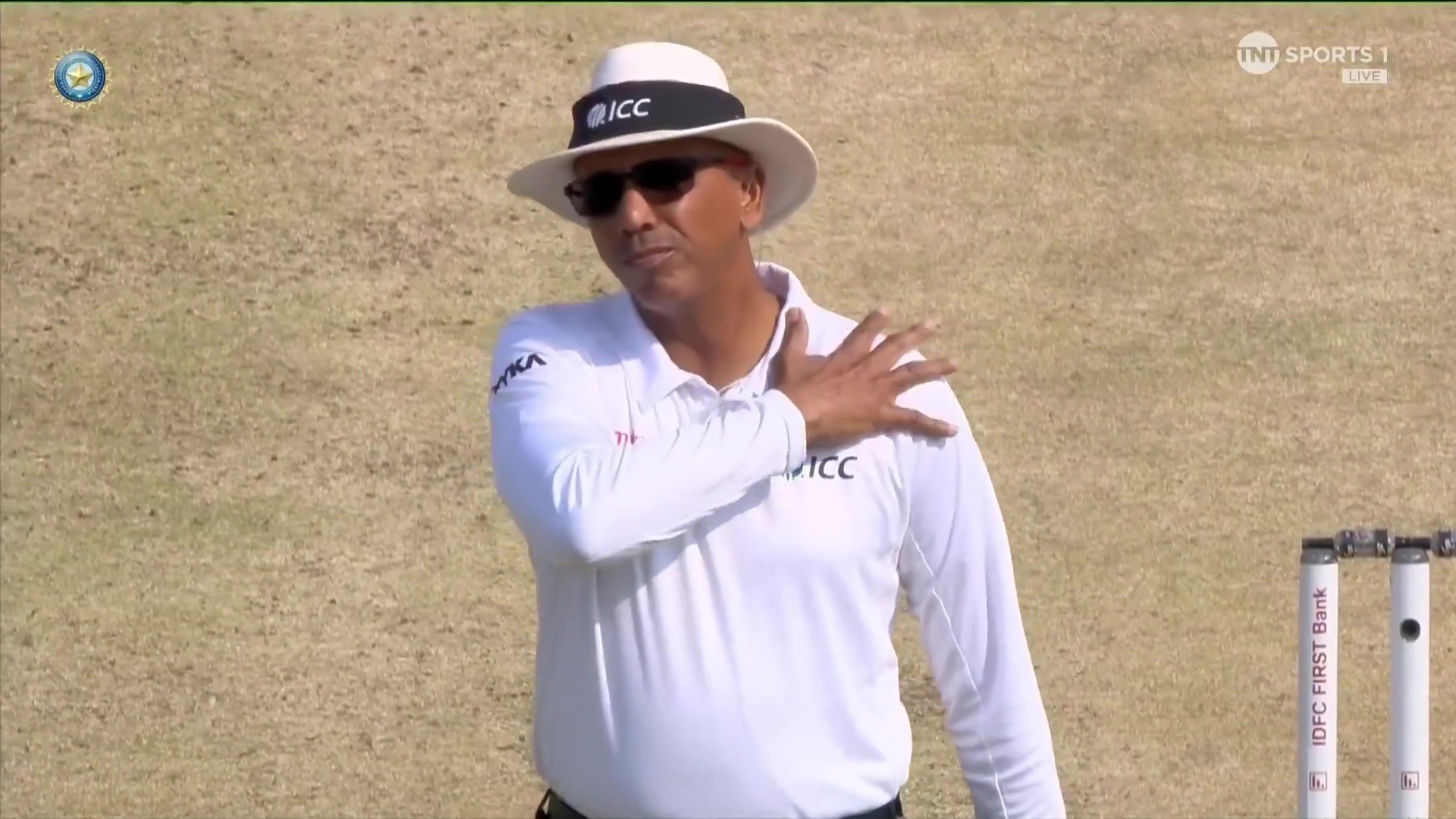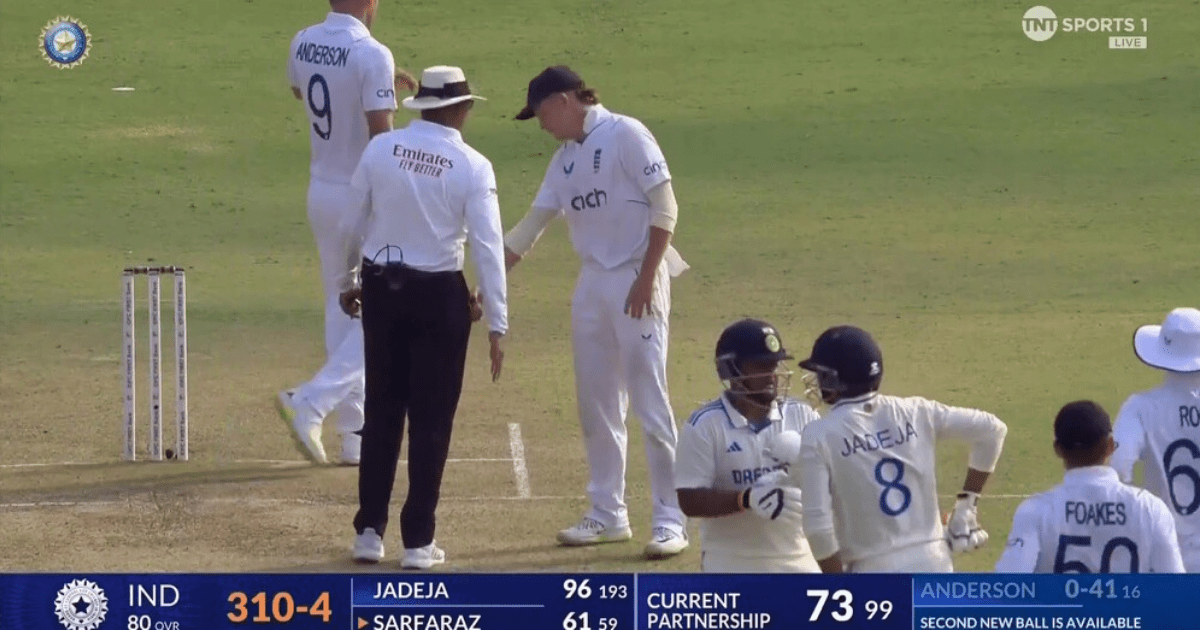England's cricket team was awarded five penalty runs during their match against India after Indian batter Ravichandran Ashwin was found guilty of running down the protected area of the pitch. The incident occurred during the final session of the opening day at Rajkot, and it resulted in a rare penalty ruling that left both teams and fans shocked.
England batsmen Ollie Pope snitches on Indian batsmen for a five-run penalty
During the match, England batsman Ollie Pope noticed that Indian batsmen Sarfaraz Khan and Ravindra Jadeja had been running up the pitch, which is against the rules. Pope immediately notified the umpire, Joel Wilson, who issued a warning to the Indian players. However, when Ravichandran Ashwin repeated the offense in the 102nd over of India's first innings, England's Joe Root alerted the umpire once again, leading to the penalty decision.
Ashwin's actions questioned and penalty awarded
Ashwin hit the ball into the offside and ran down the pitch, then turned on his spikes and returned to his crease when the run was not available. This action was seen as an attempt to scuff up the pitch, making it more favorable for spin bowling. As a result, England was awarded five penalty runs, which were added to their first innings score in the Third Test.
Ashwin sought clarification from the umpire and engaged in multiple conversations before eventually accepting the decision. Former England cricket captain Sir Alastair Cook commented on the incident, stating that the tactic was deliberate and aimed at gaining an advantage for Ashwin when he bowls. Cook also mentioned that he had never seen a warning of five runs given before and that it was an unprecedented ruling.

Ollie Pope praised for speaking up and fans show displeasure
Cook jokingly referred to Ollie Pope as a "snitch" for immediately notifying the umpire about the offense. Pope's actions were praised by Cook, who highlighted the involvement of Joe Root in ensuring that the umpire noticed the violation. However, fans expressed their unhappiness with the penalty decision and criticized Ashwin's behavior on social media.
The penalty ruling and the overall incident caused a stir among the spectators, with the Barmy Army, England's dedicated cricket supporters, cheering on their team and singing "six more to England." Additionally, England was awarded one extra run for a no ball, further increasing their advantage in the match.
Some fans felt that five penalty runs were not enough to address Ashwin's actions and called for stricter consequences, even suggesting that he should be prohibited from bowling in the current innings.
Frequently Asked Questions
How often are professional cricketers trained?
The schedules of professional cricketers are intense during the series and tournaments, as well as in the run-up to the season. The majority of the time, professional cricketers train between five and six times a week. They concentrate on various aspects of the sport, such as physical fitness, skill training, or match practice. The offseason can involve less intensity or frequency. It allows players to recover, and focus on their own skills.
How do cricketers maintain their mental focus during long matches?
Cricketers must develop the ability to remain mentally focused throughout lengthy matches. They do this by utilizing various mental conditioning exercises. Meditation, visualization exercises and goal-setting are some of the techniques that help cricketers stay calm and focused in high-pressure situations. Sports psychologists are often involved in helping players build mental resilience. They also help them deal with stress, anxieties, and distractions. It is common to develop a pre-delivery ritual that helps players focus on the current delivery and not the overall match status.
Do cricketers have a specialization or do they practice all the skills?
Cricketers may have a primary skill such as batting or bowling. They are also trained in other areas to make them more versatile and adaptable. Even expert batsmen or bowlers spend time improving their fielding ability. All-rounders, who contribute with both batting and bowling, split their training time to hone both skill sets. It is important to train in all aspects of the game for the balance of the team and for greater strategic options.
What role does videoanalysis play in the training of a cricketer?
Video analysis is a crucial aspect of modern cricket training. It allows players and coaches to dissect past performances and identify areas of improvement. The technology allows for detailed analysis of batting technique, bowling action, and fielding movement. By using slow-motion and other analytical techniques, players can refine and understand their skills and the strategy of their opponent. They can also improve their understanding of the game. In team meetings, players often conduct video sessions to gain insight on tactical planning.
What is an average training program for a professional Cricketer?
A professional cricketer’s training schedule is rigorous and well-structured, aimed at developing physical fitness, technical skill, and game strategy. Morning fitness sessions are usually devoted to cardiovascular exercises, agility drills, and strength training. The afternoons are usually reserved for specific skill training such as batting and bowling. Cricketers practice real-game scenarios and simulate matches in addition to their regular net sessions. Rest and recovery are also integral parts of the schedule, with particular attention paid to adequate sleep and physiotherapy when needed.
Statistics
- Professional cricketers playing at the international level may engage in upward of 200 hours of net practice sessions in a year.
- Dietary analysis of elite cricketers reveals that they consume approximately 55-60% of their daily calories from carbohydrates during intense training periods.
- Spin bowlers spend an estimated 50-60% more time honing their technique in the nets compared to fast bowlers, who focus more on physical conditioning.
- A typical professional cricketer may spend up to 12-15% of their training time on mental skills, such as visualization and cognitive exercises.
- On average, professional cricketers dedicate 20-25 hours per week to various forms of cricket-specific training.
External Links
thecricketmonthly.com
lords.org
pitchvision.com
wisden.com
icc-cricket.com
- Cricket Training ICC
How To
How to Structure a Cricket Pre-Season Training Camp
The focus of a preseason cricket camp is on preparing players to play in the new season. An assessment is needed to establish the skill and fitness levels of players. Structure a program that progressively builds fitness, with an emphasis on core strength and endurance. Skills sessions should begin with basic drills and progress to match-play scenarios. Ensure that the camp includes team-building exercises to foster cohesion. Plan meetings with the goal of setting expectations and goals for the season. Schedule intersquad matches for players to get a realistic game experience.

